The sequel to Spider-Man: Into The Spider-Verse saw directors Joaquim Dos Santos, Kemp Powers and Justin K Thompson take the story into new dimensions. The trio along with producers Phil Lord, Christopher Miller and Amy Pascal talk to Screen.
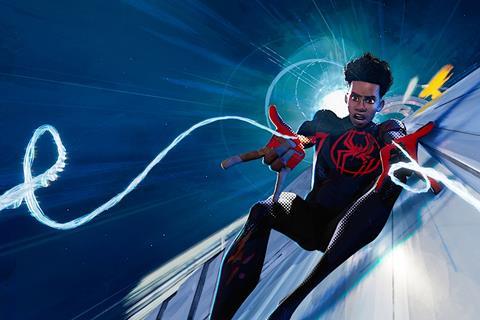
Joaquim Dos Santos, one of the three directors of Sony Pictures Animation’s Spider-Man: Across The Spider-Verse, will never forget the first time he saw the film’s ground-breaking predecessor, Spider-Man: Into The Spider-Verse. The Portuguese-American filmmaker, who made his name in TV animation with the likes of Avatar: The Last Airbender and Voltron: Legendary Defender, had been invited by producers Phil Lord and Christopher Miller to watch an early cut, with a view to taking on the sequel.
“I’d never seen anything like it,” he tells Screen International during a trip to London with his fellow directors Justin K Thompson and Kemp Powers. “Phil and Chris were sitting in front of me in this little screening room. The film ends, the lights come up and they say, ‘How do we go bigger than this?’ My brain is half-melting out of my ears at that point, and these guys are already asking, ‘How do we evolve?’ That is them in a nutshell. They’re always chasing the next best idea.”
Dos Santos is not merely succumbing to hyperbole when he says 2018’s Into The Spider-Verse melted his mind. The film’s striking blend of high-end digital animation with traditional hand-drawn techniques made more than $384m at cinemas worldwide for Sony Pictures, and earned the animated feature Oscar in 2019 (it was the first non-Disney/Pixar production to win in eight years).
It marked a peak achievement for Lord and Miller but they had been innovating in that space for a decade, with their own directing debut Cloudy With A Chance Of Meatballs in 2009 and 2014’s The Lego Movie. “Working with these guys, you know you’re going to get something that no-one’s ever seen before, and they’re not going to rest until it is something no-one’s ever seen before — or thought of,” says the duo’s fellow Spider-Verse producer Amy Pascal.
“[CG] Animation had been getting into a bit of a stylistic rut,” says Miller, sharing a plush sofa with Lord and Pascal while visiting London in December to prep their latest collaboration Project Hail Mary (a live-action sci-fi based on the novel by Andy Weir, author of The Martian). “It has its roots in visual effects, which is why it does a great job of rendering very realistic water, hair and cloth. But the hand of the artist is so much more interesting, philosophically. So if we got any itch to push the medium, we would take it. And then keep pushing and pushing, asking, ‘How far can we go?’”
That was the question Lord and Miller put to Dos Santos, Powers and Thompson: how far could they all go in taking this groundbreaking film to new places, new heights, new dimensions? “Because we’re maniacs, we thought we could make a better movie, or a different movie, or a more interesting movie,” says Lord.
“It was like we were peeking through a door of possibilities in that first movie,” adds Miller. “By the time we finished it, we said, ‘Oh, if we knew then what we know now, we could kick the door down and do a whole bunch of crazy stuff.’”
Besides, Pascal points out, “There was a lot of story that needed to get told to tell Miles’s whole story.” She is referring to Miles Morales (voiced by Shameik Moore), the teenager who became the new Spider-Man after Peter Parker died in a tragic accident, and discovered there were innumerable parallel universes, each with their own Spider-Person, including Gwen Stacy’s Spider-Woman (Hailee Steinfeld). But where Into The Spider-Verse had those arachno-powered variants visiting Miles’s world, Across The Spider-Verse sees Miles venture into other universes, including the futuristic Nueva York — home to ‘Spider-Man 2099’ Miguel O’Hara (Oscar Isaac) — and the bright, bustling Mumbattan, a hybrid of Mumbai and Manhattan.
“This movie was the biggest, most ambitious animated film ever made, with the largest crew,” states Miller. “We had a thousand artists working on it. It was like Ben-Hur but animated.” With their three directors of Into The Spider-Verse (Bob Persichetti, Peter Ramsey and Rodney Rothman) becoming “too famous” as Lord jokes, they needed to find three fresh directors “who each had something complementary to offer”.
Dos Santos, says Miller, “is probably one of the best action choreographers there is in any medium,” while Powers “is an amazing writer and has worked with actors quite a bit from his playwriting days”. Powers wrote One Night In Miami… and co-wrote and co-directed Pixar’s Soul, which he was still working on when Lord and Miller approached him. “I wrapped Soul on Friday, and on Monday I was secretly working on Spider-Verse,” says Powers. “I had to keep it secret until after I’d promoted a whole different film.”
Visual evolution
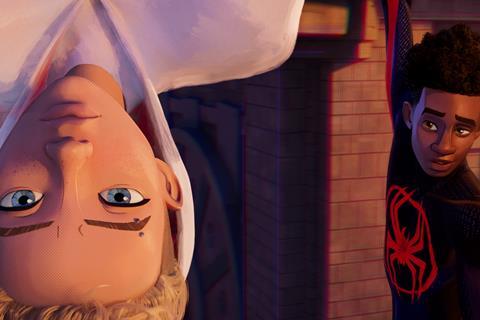
Thompson, meanwhile, was production designer on the first Spider-Verse and had worked with Lord and Miller since designing Cloudy for them. “He’s a visual stylistic genius,” says Miller, “and was one of the people who was very responsible for the look of the first [Spider-Verse] film.” Thompson had long wanted to move into directing, but having “always wanted to try different things” with each project, he says he needed to be sure Across The Spider-Verse would not be a sequel that merely replayed the first film’s greatest hits. It only took a few meetings to convince him.
“It became clear this was going to evolve not just visually, but story-wise too. I got so excited about its coming-of-age themes, and how they affected both the parents and the kid. Because we [the three directors] all have teenagers, that’s what really drew me into the project,” says Thompson. “On top of that, having finished up the first film, there were so many things I learned that I knew we could have done even more expressively, as wild as it felt. While people were using words like ‘game-changing’ and ‘revolutionary’ for the first film, I was ready to do way more, and I knew we could.”
Across The Spider-Verse, all agree, felt like making several movies at once. “We always thought about the movie reel by reel,” says Lord. “The first reel was going to take place in Gwen’s dimension, the second was going to be Miles’s, the third we go to Mumbattan… Every reel of the movie is in a different place. But the idea was not to skip around super-frantically, and to spend time in each environment as much as we possibly could.”
According to Dos Santos, they “wanted each of these worlds to feel big enough to hold their own film. We would say things like, ‘Wouldn’t it be cool to do a film just in Mumbattan?’” This enthusiasm kept pushing the creative team to make each of the film’s universes more distinct. “Not just down to colour palettes and textures,” says Thompson, “but by rethinking everything from the ground up. It was a completely holistic approach.”
“Each sequence is a new experiment,” says Miller. “It’s supposed to look like the hand of a different artist, and has to be completely original and bespoke. So you’re reinventing the wheel, again and again.”
“It wasn’t like the rules we used in one world we could borrow and use in another,” adds Thompson. “We really did, in a way, build six different films. An average animated film has about 1,200 shots. We had about 3,700. And that can be overwhelming.”
Fortunately, they were a tight team, staying in constant contact throughout production, largely via a text-chat group they called “The Whammer Jammers”, reveals Powers. “It was the three of us, Chris and Phil, and our producer Christina Steinberg.” This group became emblematic of the entire process, says Powers, which was one of “perpetual debate and discussion. I think you work best with Phil and Chris if you’re passionate about your ideas and are willing to fight for them, because they like a debate. If you had an idea in the shower or driving, you’d shoot it in the Whammer Jammers, and the next thing you’d know everyone would be picking it apart, attaching images and going down a rabbit hole.
“Sometimes I’d regret having brought something up,” he adds, “because now we’d have to really figure it out, and go down every path.” According to Dos Santos, “there’s a multiverse of different versions of this film that have been cut”.
Double feature
Despite discarding so many alternative versions of the film, it became clear about halfway through production that they simply had too much for just one movie. “We either had to make it shorter or longer,” says Lord. Meaning they would have to truncate their vision or turn their sequel into two concluding parts of a trilogy. “Shorter would have short-changed a lot of the character stuff, and we thought we saw an opportunity to make a more sophisticated movie that was more centred on the relationships. Then we got excited about the idea of a middle chapter that was a little darker.”
According to Powers, they “always had The Empire Strikes Back as our North Star” for Across The Spider-Verse. However, he insists, “we didn’t just cut it in half. There are things that would have been in the second half of [the five-hour original cut] that are in this film. It all had to be reworked, because we had to complete certain characters’ arcs.”
The aim with the next film, Spider-Man: Beyond The Spider-Verse, “is to tell a satisfying conclusion to Miles’s story,” says Miller. “And that’s about a family coming back together,” Lord continues. “The point is, even though the scope is even bigger, the focus of the film is more intimate.”
Across The Spider-Verse’s impressive $691m worldwide box-office gross suggests this was the right commercial move, as much as a storytelling necessity. Audiences have developed a taste for animated features with an expressionistic edge, judging by the success of films clearly influenced by the Spider-Verse aesthetic, such as Puss In Boots: The Last Wish and Teenage Mutant Ninja Turtles: Mutant Mayhem. “That was the goal — to let the studios feel comfortable spending money on something that looks different,” says Miller. “It feels like we’re at the start of an explosion of stylistic variation.”
Defining the look of Spider-Man: Across The Spider-Verse’s six different dimensions
Miles’s world
Miles Morales’s Manhattan is defined by its comic-book style, with thick character outlining, Ben Day dot texturing and the inventive use of offset colour. “We do a lot of the ‘misprint’ offsetting for depth of field in Miles’s world,” explains director Justin K Thompson. “The further things are from the camera, the more offset they are in three-dimensional space.”
Gwen’s world
The film opens in Gwen Stacy’s universe, with colour washes that match the character’s moods. “The idea was, could the image reflect how she felt?” says producer Phil Lord. “So instead of objectively reflecting the way light bounces off everything, it subjectively paints her internality, and does that dynamically in motion as she travels through the picture.”
Mumbattan
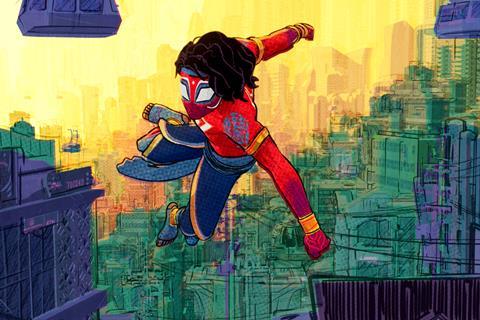
“We wanted Spider-Man India’s world to look like the Indrajal Comics from the ’70s and ’80s,” says producer Christopher Miller. “We thought the first place Miles goes to in the multiverse should be overwhelming. How do you go from black-and-white to colour when you’re in a world as colourful as the one Miles lives in? Well, how about Mumbai meets New York?”
Earth 2099
Spider Society leader Miguel O’Hara’s domain was inspired by the concept art of futurist Syd Mead, who guided the aesthetic of Ridley Scott’s Blade Runner. “You can see the pencil-line work,” Miller says, “with a mix of acrylic and marker for the colour, while the information on the edge of the frame bleeds off into nothing, the way his concept art does. The idea was we wanted to say that the future isn’t written, as a sort of subtle dig against what Miguel is saying.”
Spider-Punk’s world
Unsurprisingly, the aesthetic of Hobie Brown (Daniel Kaluuya) and his briefly glimpsed dimension was rooted in “the visual heritage of punk music”, says Lord. “He was one of the most challenging things in the whole movie. It required writing all-new shaders, and including something in his animation rig so the animators could, for example, time when his arm turns to newsprint.”
Earth 42
This universe, revealed in the film’s final act, “is the darker side of the coin of Miles’s world”, says Miller. “It has a lot of hatch marks, big black shadows, more aggressive line work, more acidic colours.” They also drew inspiration from Frank Capra’s It’s A Wonderful Life. “We called it the ‘Pottersville version’,” explains Miller, with reference to the dark alternative reality seen in Capra’s festive favourite.

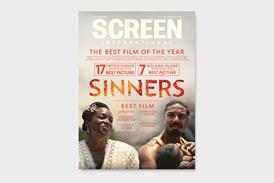










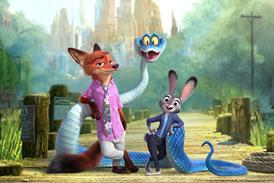
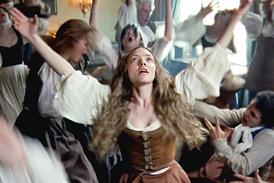

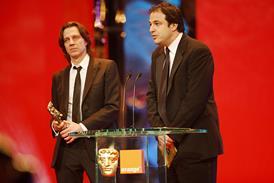







No comments yet